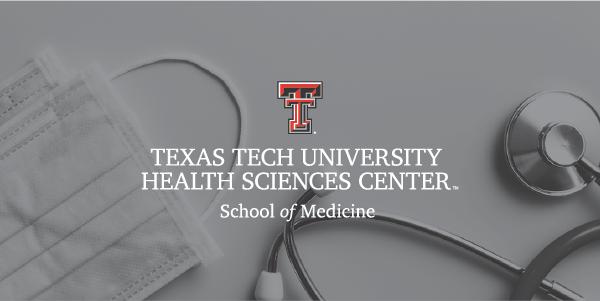Primary Care Medicine the Foundation of a Strong Healthcare System
Primary care professionals serve on the front lines of healthcare. For many, they
are the first point of contact with the healthcare system. That means they are often
the first to see depression, early signs of cancer or chronic disease, and other health
concerns. They ensure patients get the right care, in the right setting, by the most
appropriate practitioner, and in a manner consistent with the patient’s desires and
values. Primary care professionals are, essentially, the quarterbacks of healthcare
(The Case for Primary Care: blogpost @ primarycareprogress.org).
Primary care is also the foundation of an effective healthcare system. Robust systems
of primary care are positively correlated with improved health outcomes, including
all-cause, cancer, heart disease, stroke and infant mortality, low birth weight, life
expectancy and self-rated health (Petterson S, McNellis R, Klink K, Meyers D, Bazemore
A. The State of Primary Care in the US: A Chartbook of Facts and Statistics. January
2018). Patient care delivered with a primary care orientation is associated with more
effective, equitable and efficient health services.
The Growing Need
In the United States, the primary care physician workforce comprises about 1/3 of
the total physician population. This contrasts with most other countries to which
the US is compared in which about 2/3 of the physician workforce specialize in primary
care.
It has been widely reported that the US is experiencing a shortage of primary care
physicians, which is predicted to worsen soon. It is estimated that by 2032, there
will be a shortage of between 21,100 and 55,200 primary care physicians in this country.
In Texas, it’s estimated that we will have a shortage of up to 3,375 primary care
physicians by 2030 (2019 Update: The Complexities of Physician Supply and Demand:
Projections for 2017-2032. American Association of Medical Colleges). There are several
reasons for the shortage but the major force driving demand continues to be a growing,
aging population with an increasing number of chronic conditions.
In addition to shortages of primary care physicians, there is significant maldistribution
as well. Primary care physicians and other physicians tend to practice in urban areas;
in fact, physicians in Texas are concentrated in the state’s largest urban counties.
There are at least 35 Texas counties that don’t have a practicing doctor. With an
ever- increasing population Texas needs more primary care physicians. The need is
especially critical in rural parts of Texas.
The Power of Relationships
There are many appealing aspects to a career in primary care. Since each of the primary
care disciplines covers a very broad range of conditions, the intellectual stimulation
and the deep understanding of the pathophysiology of human health and illness is one
aspect of the allure of primary care. Another compelling element is the longitudinal
relationships that we are privileged to share with our patients and their families.
In family medicine and internal medicine, it is not uncommon to care for three generations
of a family. In pediatrics, clinicians care for children from birth until late teens
so long-term relationships are frequent.
There are benefits to both clinicians as well as the patients for whom they care.
We learn not only about our patients’ medical issues but also about their families,
their careers, their successes and the challenges they face in their lives. In turn,
our patients see us as trusted and knowledgeable partners in their health and healthcare.
When our patients face a serious or life-threatening illness, having a personal physician
who understands and respects their preferences and priorities in life is critically
important. We can and do advocate for our patients as the member of the healthcare
team that knows them best. We can be their voice in discussions with specialists when
evaluating treatment options.
The Power of Teamwork
In order to meet the growing demands of primary care, a shift in the way care is organized
is occurring. Team-based care is becoming a more common model in primary care practices.
A driving force behind health care practitioners’ transition from being “soloists”
to members of an orchestra is the complexity of modern healthcare. Teamwork is the
foundation for resilience to errors. In addition, high functioning teams have tremendous
potential to promote clinician well-being, which is foundational to effective and
efficient team-based care.
The composition of primary care teams can take many forms depending on the needs of
the practice’s patients. The team is led by a physician who works closely with one
or more nurses or medical assistants. They form the backbone of the clinical care
team. With proper training and experience, the nonphysician members of the team take
on greater responsibility for patient care.
The keys to success are mutual respect; defined roles and responsibilities and frequent
communication among the team members. They may “huddle” in the morning before the
day begins and review the schedule of patients to be seen that day. Notes are made
of patients who are due to followup lab work, preventive care such as immunizations,
a mammogram or colonoscopy. These items can be ordered by the non-physician team members
as part of standing delegated orders. The nursing staff can document the visit and
other information in the electronic health record which frees the physician to focus
his/her attention on the patient.
Other team members may include health coaches, social workers, diabetes educators,
pharmacists, nurse practitioners, physician assistants, behavioral health specialists
and others, depending on the needs of the patient population. Clinical care teams
are dynamic and must have the flexibility to determine roles and responsibilities
expected of them based on shared goals and the needs of the patient.
The Role of Technology
The practice of medicine has been impacted by technology in several ways. The electronic
health record (EHR) has seen widespread adoption. Although the concept is an appealing
one, the EHR has not lived up to its potential as a clinical tool. Still, there are
a number of benefits to the EHR including alerting the clinician to the need to schedule
preventive health screening exams, vaccinations and laboratory testing. Electronic
health records also can alert clinicians about drug allergies and potential drug interactions.
Ideally, EHRs can serve as clinical communication tools between clinicians in various
locations and in other practices.
Another technology that many patients and clinicians find useful is the patient portal.
Within guidelines, patients can message the practice and their personal physician.
Clinicians can send messages and laboratory results as well.
Telemedicine is a promising tool for a number of clinical settings. In Texas, if a
patient has an established relationship with a physician, telemedicine can be used
for some types of subsequent visits. Telemedicine has been particularly beneficial
for augmenting physician presence in more remote areas of our state. We will see increased
use of telemedicine as patients find it an increasingly convenient way to access their
clinical team.
The use of wearable devices is also increasing. Continuous glucose monitors, various
types of heart monitors, pulse oximeters and other devices can feed patient data directly
into the EHR in many situations. These data can serve as a useful adjunct to other
clinical data and help guide the patient’s treatment plan.
Summing it Up
A career in primary care can be very satisfying. There is a pressing need for additional
primary care physicians in Texas. With new models of care and new technology, primary
care specialties will continue to serve as the foundation of an effective and efficient
healthcare system. During your journey into medicine, you might want to strongly consider
the benefits of practicing primary care medicine. You and your patients will be very
happy you did!

About the author: The Texas Health Education Service amplifies TMDSAS and JAMP’s missions to serve students, collegiate advisors, and professional schools in Texas by providing students with accurate educational resources to enhance their preparation for a career in the health professions, and supporting efforts by advisors and professional schools to reach students and enrich the applicant pool.




